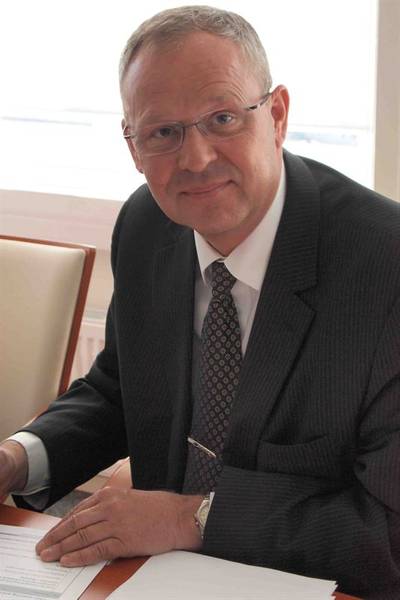Optimarin Secures NOK 100 Million BWT Contract
Ballast Water Treatment: Optimarin lands NOK 100 Million fleet retrofit contract with Saga Shipholding.
Optimarin has signed a major fleet-wide ballast water treatment contract with Saga Shipholding (Norway) AS (SSH), the open-hatch carrier subsidiary of Nippon Yusen Kaisha (NYK), the world’s largest shipping company and owner of some 850 vessels operating within the car carriers, bulk, tanker (petroleum, chemical, LPG and LNG) and cruise sectors.
The retrofit contract, exceeding NOK 100 million, covers complete ballast water treatment (BWT) systems including engineering and service agreements for 24 sophisticated open-hatch bulk carriers. With an agreement already in place for seven Saga and one NYK newbuildings, Optimarin’s combined Saga work program now amounts to NOK 140 million. Optimarin’s aggregate order book stands at NOK ¬¬¬250 million, representing over 110 vessels. This positions the company as the world’s leading BWT systems supplier to the global shipping industry.
The Saga contracts call for large scale Optimarin Ballast Systems (OBS) capable of handling all seawater salinities and fresh water in accordance to the International Maritime Organisation’s ballast water management convention. The OBS system features a fully back-flushing filter with 40 micron screens. It is fully automatic and self-cleaning and capable of removing large sediment particles, zooplantkton and phytoplankton under heavy sediment load conditions.
Forward thinking decisions and technology
According to Saga, the decision to choose Optimarin was based on safeguarding NYK’s investment in tonnage and their on-going ability to operate globally. Securing a proven BWT technology was considered vital.
“There is going to be a serious bottleneck when some 50,000 ships scramble to meet global BWT regulations in a few years’ time. Now with the US Coast Guard pushing ballast water ratification, global shipowners must ramp up their BWT decision-making choices. We are one of them,” said Lars Traaseth, Managing Director of SSH.
If all shipowners plan a BWT retrofit during a vessel’s five-year survey, about 11,000 retrofits must be completed between 2013 and 2016. Market observers estimate a peak in 2017 with 16,500 vessels needing to be retrofitted that year, an average of 45 systems per day.
Faced by an array of solutions and approaching deadlines, Saga made its technology decision and is now coordinating full BWT implementation across a fleet of vessels in operation around the world. “We have been researching BWT systems since 2005. We chose Optimarin due to its proven technology and quality at a competitive price,” said Traaseth. “We are not taking a wait and see attitude, but are taking advantage of a buyers’ market and a BWT system with a good track record. Non-prudent shipowners could face price hikes in a few years’ time.”
Saga is an international ocean shipping company specialising in the transportation of forest products. The company’s box-shaped open-hatch vessels represent one of the newest and most sophisticated and flexible fleets of forest product carriers in the world today. Each vessel is fitted with two specialised gantry cranes of 40-42 MT lifting capacity, which in turn provide high-capacity and speed for loading and discharging of unitised cargo. Each vessel is fully inter-changeable within the trades that Saga operates. “Saga’s state of the art modern fleet carries a wide variety of traditional unitised and bulk cargoes. Our modern open-hatch gantry vessels ensure the highest quality cargo care and demand a high-tech, environmentally friendly BWT system,” said Traaseth.
Saga is entering one of the most extensive newbuilding programs in the open hatch gantry industry by ordering seven plus on NYK owned sophisticated open hatch gantry vessels from Oshima Shipbuilding of Japan and DSME of Korea for delivery in 2012/13. “We seek robust quality in all aspects of our business and found Optimarin’s BWT technology to meet our worldwide trading demands. Optimarin’s automatic backwash solution, monitored by a pressure switch, ensures and maintains filter efficiency. This was an important factor when making our final decision,” said Eivind Holte, Senior Technical Manager at Saga.
“Optimarin’s flexible modular construction means efficient use of space and power and easy integration with ship systems. This gave us the confidence we needed and we have chosen Optimarin for each and every ship. With ship crews rotating from vessel to vessel, we felt that one system, one supplier, grants the best economy of scale and safest operation,” said Holte.
Optimarin’s fully back-flushing filter results in a pressure drop of less than 0.5 bar. Filtered ballast water is directed to a disinfection chamber where ultraviolet lamps deliver UV radiation for 100% disinfection. Optimarin integrates its UV disinfection and advanced filtration systems into one compact unit, thus achieving low power consumption, easy installation and small footprint. The system does not deteriorate ballast tank coatings.
“We are now confidently positioned to handle large contracts and the growth that will inevitably come with the US forging ahead with their BWT requirements,” says Pål Sanner, CEO of Optimarin. “We are proudly global in our approach to design and component quality but we have agents throughout Europe, the Americas and Asia and it is our intention to remain competitive with our pricing and service offerings no matter how market demand fluctuates in the next few years. We are a long-term player and build our relationships on that basis.”







